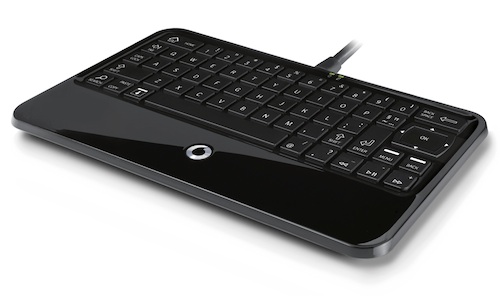
Vodacom on Monday officially took the wraps off its television Internet device, the Vodafone WebBox, which it hopes will extend Internet access to poorer South Africans.
TechCentral has had the opportunity to test the device, which Vodacom reckons will “change the face of Internet connectivity in SA”. We’re not so sure, given the WebBox doesn’t offer flat-rate Internet access.
The product, in black plastic and consisting of a keyboard with built-in battery and GPRS/Edge modem (a 3G version will follow later), should look good in any lounge.
It has a 3m cable, enough for small living rooms, though we’d have preferred an option with a 4m or 5m cable. It connects to the TV using RCA jacks — the same connections many people use to hook up their DVD players.
The WebBox, made by China’s ZTE and designed by Vodacom’s UK parent Vodafone, is aimed at consumers who don’t already have a computer or Internet access in their homes. The company says the country has 18m households with TV sets, far more than have computers. Vodacom wants to use the product to get households with incomes of between R2 000 and R6 000 a month onto the Web.
The device, which costs R749, runs Android 2.1 Éclair, ships with a 2GB micro SD card (expandable to 16GB) and comes bundled with 100MB of data, which expires after three months if not used.
The WebBox features the Opera Mini 5.0 Web browser — the same browser that runs on mobile phones — and supports a wide range of media playback formats, including AAC, AAC+, MP3, Ogg, H.264 and Mpeg-4.
According to Vodacom, the Opera Mini browser supports secure transactions and so the WebBox can be used for online banking and e-commerce, although the target market for the most part won’t engage in online transactions.
There’s also a basic e-mail application that connects to services such as Gmail and Hotmail. Pop, Imap and Microsoft Exchange services are supported. SMS texting is supported, and there’s an FM radio — audio playback is through the TV speakers, not the device itself.
Other applications include an English dictionary, Facebook and text editor. There’s even a YouTube app, though this makes little sense on a device that doesn’t support 3G.
A big downside is that although the WebBox runs Android, it won’t connect to Google’s Android Market, so consumers won’t be able to install their own apps. However, firmware updates are offered over the air, and these are zero-rated so consumers won’t rack up huge bills on these upgrades.
A big oversight is that the WebBox can’t open Microsoft Office documents. There are free applications for Android for reading Office files, so we hope this is rectified through a firmware update soon.
The WebBox’s biggest drawback — and the reason we don’t think it will fly off the shelves — is that consumers (and remember the target market) are charged Vodacom’s prepaid data tariffs. Though Vodacom says 50MB/month should be sufficient for the average household, consumers are likely to be put off by the fact that costs are variable.
Vodacom ought to have taken a leaf out of BlackBerry’s book with the introduction of this product, offering unlimited on-device browsing for a set monthly amount, perhaps R50/month. Given that the device doesn’t support 3G, has limited on-board storage, and only works when connected to a TV, the operator could have done more to offer “worry-free” browsing to consumers.
The WebBox is an excellent concept, and addresses a pressing need to get more South Africans online. But the product will fall short of its potential until Vodacom offers more compelling tariffs — and that means uncapped browsing — to end users at affordable rates.
MTN is set to takes the wraps off a similar device at an event in Mamelodi, near Pretoria, on Wednesday. — Duncan McLeod, TechCentral
- See also: MTN takes wraps of R999 WebBox rival
- Subscribe to our free daily newsletter
- Follow us on Twitter or on Facebook




